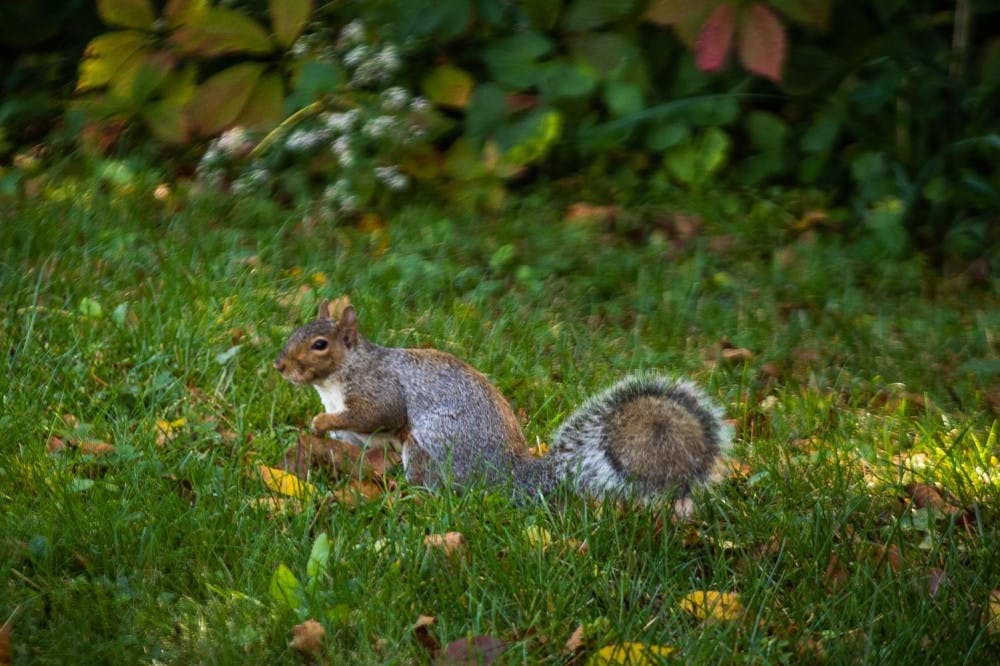MIDDLEBURY — Middlebury students returned to Vermont at the start of September to find an abundance of new bushy-tailed friends on campus. Though squirrels have always been a constant at the college, there is a noticeable increase this fall.
“They’re everywhere!” said Brooke Laird ’22. The squirrels have become a favorite new topic of conversation around campus, and many have been left wondering if this is simply anecdotal evidence or if we are actually in the midst of a boom in squirrel populations.
The abundance of oak and hickory trees in the greater Champlain Valley has always accommodated a thriving squirrel community, but many Vermont locals and college students claim to have observed even greater numbers this year.
They are not wrong, according to John Gobeille, a biologist with the Vermont Fish and Wildlife Department. Squirrel populations have multiplied this year, and we can expect further increases in coming years.
“We’ve had very mild winters that have helped squirrels [survive] over winter better, and we’ve had good crops of their food species, what we call mast trees — things like oak and hickory [trees],” Gobeille explained during a recent interview with Vermont Public Radio’s Vermont Edition. These types of trees produce what is called a hard mast, the acorns, hickory nuts and beechnuts that are essential to a squirrel’s diet.
Gobeille believes that this squirrel boom is years in the making. “Last year there would have been a high squirrel [re]production … and this year we’re seeing it continue because over the winter there is more survivorship of the younger squirrels,” Gobeille told VPR. “So a couple years of that adds up to what we’re seeing [now].”
Fortunately, there appear to be few ill effects of a greater squirrel population. When asked if the increased squirrel population could harm agriculture, Gobeille told VPR, “We haven’t gotten any complaints of squirrels on crops, but that’s not to say that it couldn’t happen. But basically, they’re concentrating on the mast right now.” On Middlebury’s campus, they seem to also be concentrating on scavenging food from garbage cans.

Squirrels spotted foraging on campus.
Many students also commented on how brazen and active these squirrels are. They seem to have little to no fear of the student body. Gobeille told VPR that this frenzy of activity happens every year during the fall. The heightened activity is part of the rush to gather all of the sustenance the squirrels need to survive the winter.
The influx in squirrels has also lead to an uptick in roadkill. A walk through town on any given day usually yields at least a couple dead squirrels, and some students have even begun counting the number of dead squirrels they see driving around the state.
“The reason you’re seeing a lot of squirrel roadkill is they’re very, very active this time of year storing up acorns … for the wintertime,” Gobeille told VPR. “So they’re moving about, crossing roads a lot.”
Gobeille offered some advice for motorists when they see a squirrel attempting to cross the road.
“Slow down, if you can — it’s nice to give them a break,” he said. “Don’t put your life in danger, obviously.”
Perhaps the most excited about this squirrel boom are their predators — the hawks, owls and foxes. These predators will likely also experience a growth in population due to the abundance of the “squirrel crop,” said Vermont Edition host Jane Lindholm.
It’s likely that Middlebury students will continue to see an abundance of squirrels across campus for the foreseeable future.




